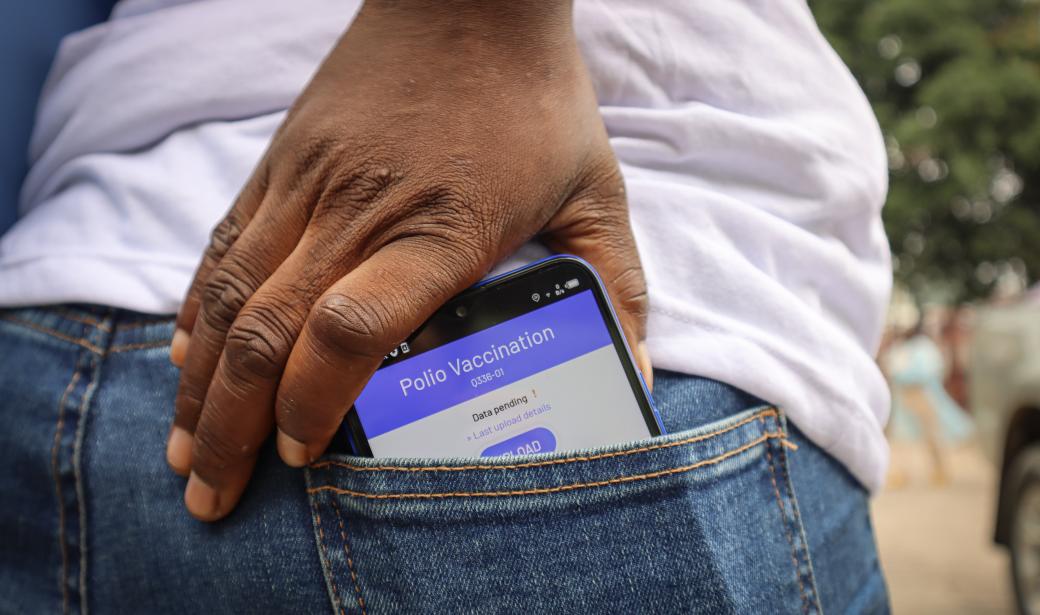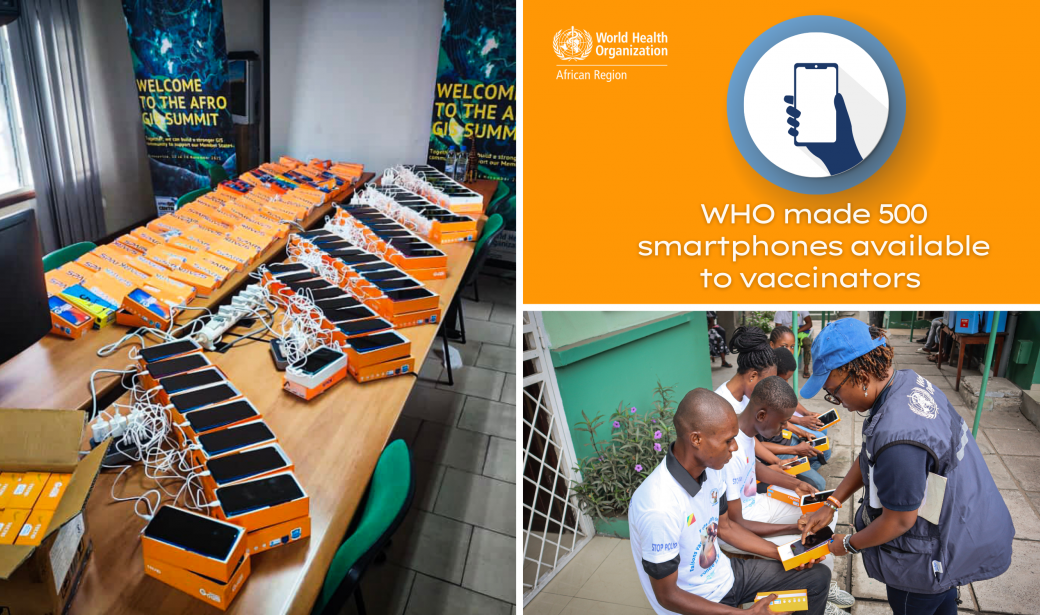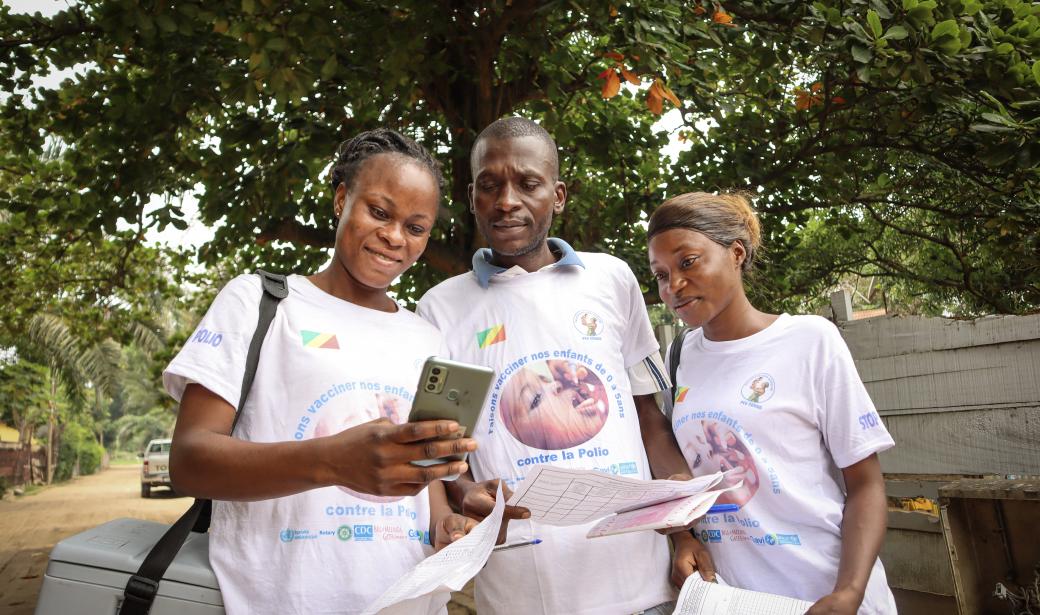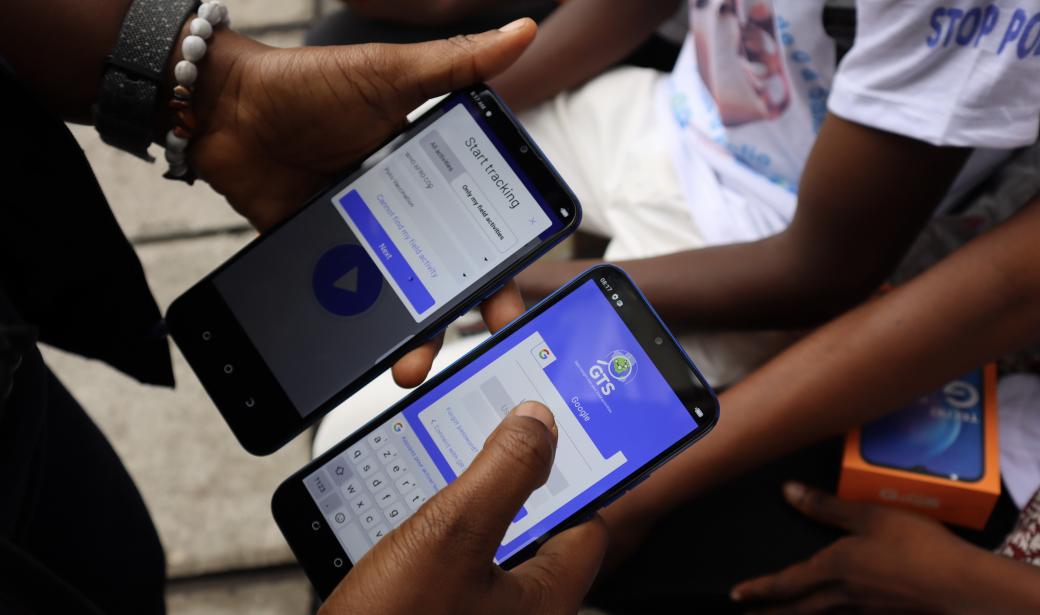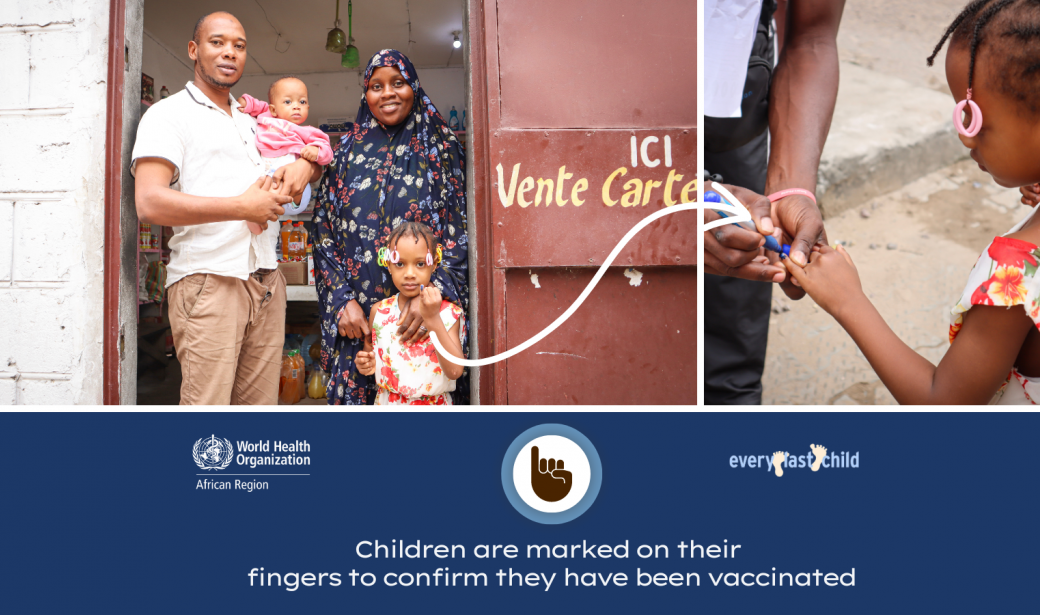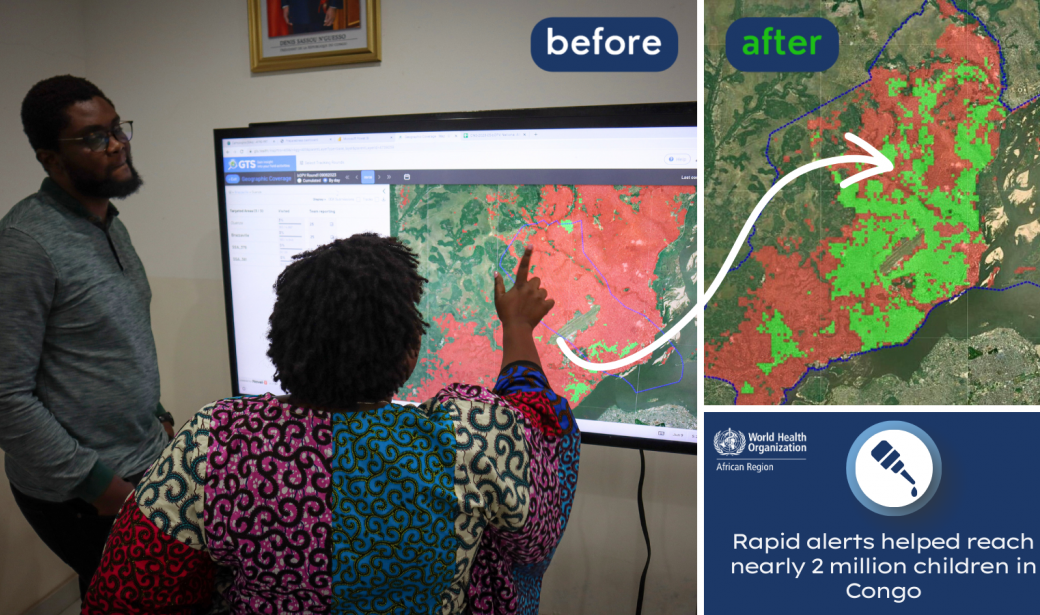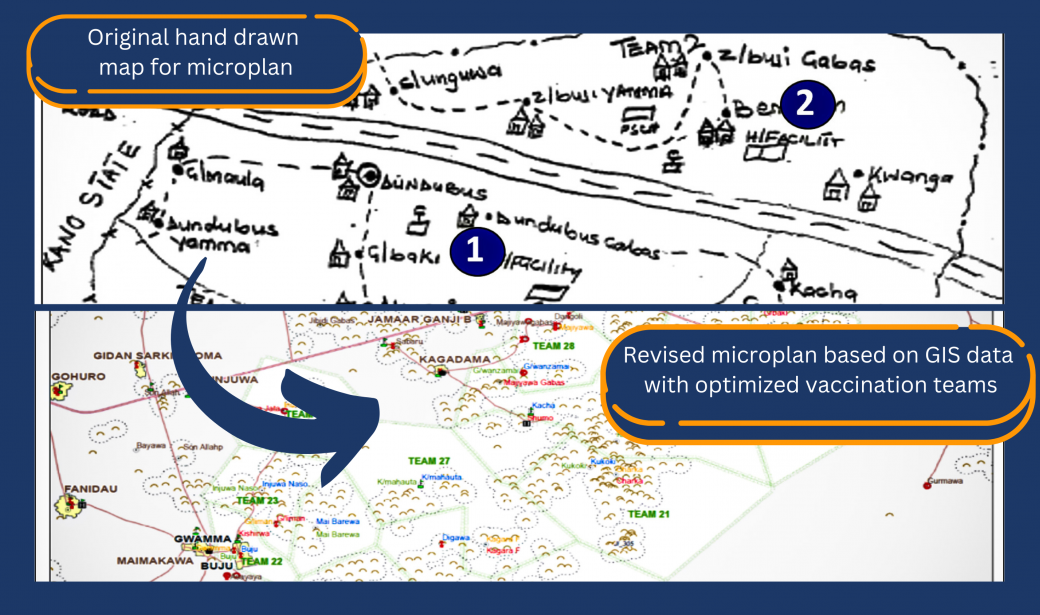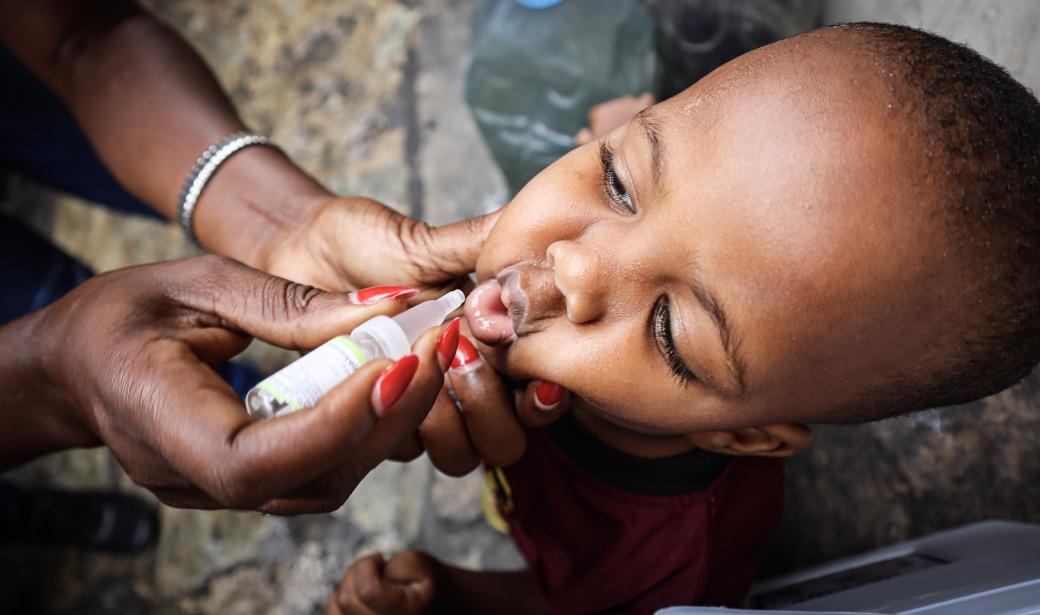Brazzaville – Since the Republic of Congo first confirmed a case of circulating variant poliovirus type 1 in March 2023 (the first such detection in more than two decades), the country has been pioneering the deployment of Geospatial Tracking Systems (GTS) to help curb further transmission.
Geospatial Tracking Systems have a critical role to play in the monitoring of vaccination teams during polio outbreak response campaigns. With support from the World Health Organization (WHO) and the rest of the Global Polio Eradication Initiative (GPEI), the mobile application was most recently utilized in Brazzaville during a national vaccination campaign from June 9 to 11, 2023, led by Congo’s Ministry of Health.
Geospatial Tracking Systems have a critical role to play in the monitoring of vaccination teams during polio outbreak response campaigns. With support from the World Health Organization (WHO) and the rest of the Global Polio Eradication Initiative (GPEI), the mobile application was most recently utilized in Brazzaville during a national vaccination campaign from June 9 to 11, 2023, led by Congo’s Ministry of Health.
“Following the configuration of the phone, which includes installing the GTS mobile app, all you have to do is charge your phone and make sure you turn on the tracker when you are out on the streets. I just put it in my pocket and go from house to house” - says WHO-trained vaccinator Sandrine Lina, showing her device to the rest of her team.
The tracker acts like any other mobile application, counting steps and using the coordinates collected to locate them on the map. At the end of every day, this information is synthesized to determine which houses still need to be visited by vaccinators, providing clear guidance to teams to help ensure no children are overlooked.
The tracker acts like any other mobile application, counting steps and using the coordinates collected to locate them on the map. At the end of every day, this information is synthesized to determine which houses still need to be visited by vaccinators, providing clear guidance to teams to help ensure no children are overlooked.
Prior to the campaign, the WHO rapid response teams trained vaccinators on how to use the application, as well as how to keep vaccines safe at the required temperature, and how and who to vaccinate, among other things pivotal for improved vaccination campaigns.
The tracker system has demonstrated its capacity to capture and analyze spatial and geographic data on visual maps, providing geographic real-time coverage information for all team areas, including locating missing settlements to improve vaccination coverage.
In conjunction with the Open Data Kit (ODK), it also has the capacity to collect field data, including settlement names, types of households, reasons for refusal to vaccinate, and more. After the campaign, the data is used to update ward-level micro plans to improve future vaccination rounds.
Congo first used this innovation in 2021. The application has since been updated, and more vaccinators are receiving the necessary training to use it optimally.
The tracker system has demonstrated its capacity to capture and analyze spatial and geographic data on visual maps, providing geographic real-time coverage information for all team areas, including locating missing settlements to improve vaccination coverage.
In conjunction with the Open Data Kit (ODK), it also has the capacity to collect field data, including settlement names, types of households, reasons for refusal to vaccinate, and more. After the campaign, the data is used to update ward-level micro plans to improve future vaccination rounds.
Congo first used this innovation in 2021. The application has since been updated, and more vaccinators are receiving the necessary training to use it optimally.
Abdul and Karima are the parents of two of the more than one million eligible children targeted by this nationwide round of vaccinations. After receiving the vaccine, the two siblings, Isaaga and Mariam, are now protected against the risk of paralysis associated with polio. To support the tracking system, children are also marked on their fingers to confirm they have been vaccinated, allowing independent monitors and WHO to assess the quality of the campaign.
At the end of each vaccination day, vaccinators upload the daily movement tracks. These are then displayed in the Emergency Operations Centre in Brazzaville and used during daily review meetings. “We saw at the end of the first day that a section targeted for day 1 in Poto Poto had not been visited. Missing children could be living there, so we took action. The next day the vaccination teams were instructed to return to that area first thing in the morning,” explains Carolyne Gathenji, data manager for the rapid response teams.
The capacity to review and make rapid corrections during immunization campaigns is new, and good news for the Polio Eradication Programme. Previously, immunization teams constantly struggled to locate missing children, using inaccurate, hand-drawn maps. Verifying information was often delayed until after the end of vaccination campaigns, contributing to the exclusion of key areas where the virus could be circulating.
Other than in Congo, WHO’s AFRO Geographic Information Systems Centre has deployed the mobile application in Cameroon and Nigeria, which was the first country to use it in 2012. Together with other response strategies, it was responsible for Nigeria's removal from the list of polio-endemic countries, and the certification of the African Region as free of imported wild poliovirus type 1 (WPV1) in August 2020.
Other than in Congo, WHO’s AFRO Geographic Information Systems Centre has deployed the mobile application in Cameroon and Nigeria, which was the first country to use it in 2012. Together with other response strategies, it was responsible for Nigeria's removal from the list of polio-endemic countries, and the certification of the African Region as free of imported wild poliovirus type 1 (WPV1) in August 2020.
To ensure that no more children are unnecessarily paralysed by polio, WHO AFRO continues to work with Member States to implement a comprehensive set of prevention and response activities. These include enhancing routine immunization, implementing supplementary immunization activities, building human resource capacity, providing technical support, and strengthening surveillance activities. Actively improving data and information management also remains critical to inform decision making processes to halt circulation of this virus.
For Additional Information or to Request Interviews, Please contact:
Monge Marta Villa
Communications Officer
Polio Eradication Programme
WHO Regional Office for Africa
Email: mongem [at] who.int (mongem[at]who[dot]int)
Tel: + 34 636 04 76 79



